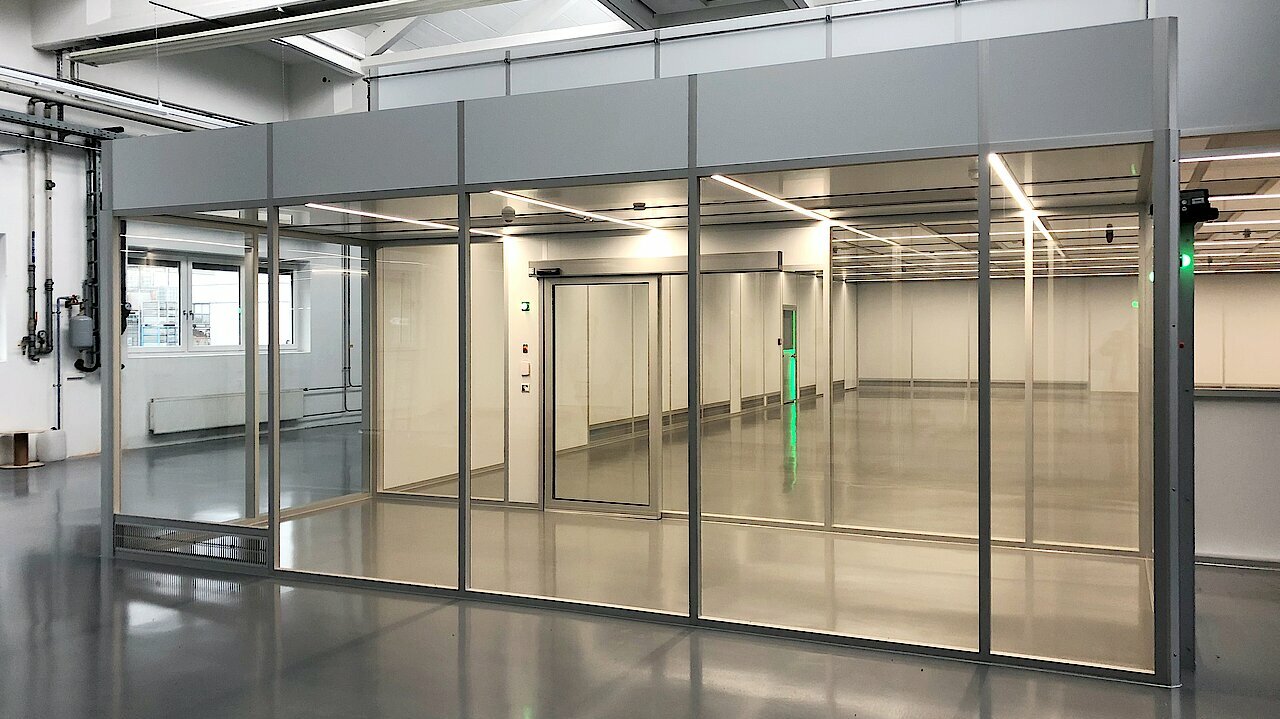What is a clean room?
In a cleanroom, clean air displaces airborne particles, keeps them away from objects with targeted air flows, and carries them to the outside. The number of particles per cubic meter of air determines the quality of the cleanroom.
The definition of a cleanroom is therefore concerned with the particle concentration of the ambient air, which must be reduced to a low, non-critical level. The controlled elimination of the harmful influence of particles and microorganisms ensures significantly higher quality and safety. Many processes can only be carried out under cleanroom conditions.
What are cleanrooms needed for?
Basically, there are three goals to be achieved with a cleanroom:
1. product protection
Ensuring the quality and function of sensitive products
Protection against contamination by germs and microorganisms
2. personal protection
Protection of employees in case of leakage of toxic substances
Protection of employees from germs and microorganisms
3. environmental protection (clean rooms with negative pressure)
Hazardous / toxic substances do not escape to the outside
Dust remains in a closed room
In many cases, individual protection goals can be met by simple measures. A smaller enclosure, an exhaust system, etc. However, as soon as a combination of objectives becomes necessary, the whole thing starts to become more elaborate. A very striking example is the production of cytostatics. Drugs that are needed for cancer therapy. Here, all three goals must be met at once. The product must be manufactured in a sterile state, and people and the environment must be protected from the substances. In addition to a safety cabinet, this also requires a high-quality and safe clean room laboratory or sterile laboratory...
A short digression: What does sterile mean? Sterile refers to products that are free of microorganisms as well as viruses, bacteria, prions and plasmids, or the surviving residue is below a certain limit value.
How are clean rooms differentiated?
Cleanrooms are differentiated according to their type of classification. In ISO cleanrooms, the main focus is on removing airborne particles that must not be deposited on sensitive products. In GMP cleanrooms, microbiological contamination via germs and spores must also be prevented.
The cleanroom classifications according to ISO standard 14644-1 or according to the GMP guideline Annex 1 determine the overall design of the cleanroom. The more sensitive the processes, the stricter the cleanroom cleanliness requirements. Cleanroom classes range from ISO 1- ISO 9 and from GMP A- D, with lower numbers indicating higher particle removal standards.
Depending on the cleanroom class, the air of the cleanroom must be completely exchanged with varying frequency. This is done via laminar air flows that carry clean air into the cleanroom and force airborne particles out of the cleanroom.
The use of cleanroom technology is increasingly becoming the key to reliability and cost-effectiveness for products with high quality requirements. Without controlled production processes under cleanroom conditions, a large number of sensitive products, such as those in the semiconductor industry, microtechnology or medical technology, where even the smallest particle deposits render the end product unusable, cannot be produced today.
